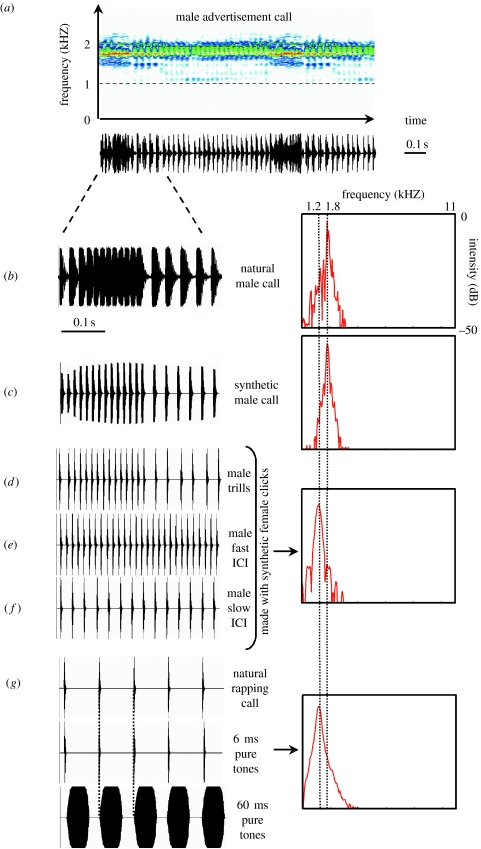Figure 2.
Test of the significance of temporal cues in Xenopus laevis calls. (a) Spectrogram (top, amplitude in colour scale; dynamic range, 35 dB; window size, 2048 points; filter bandwidth, 20 Hz) and oscillogram (bottom) of a male advertisement call. (b) Oscillogram (left) and power spectrum (right, window size, 2048 points) of a natural male call, (c) a synthetic male call, (d) a bimodal call (male-like trills) made with synthetic female clicks, (e) a male-like fast trill call (fast inter-click interval ICI) and (f) a male-like slow trill call (slow ICI) both made up with synthetic female clicks. (g) To test whether the significance of the click temporal pattern relies on the click period (the tempo) or the duty cycle (the ratio of click duration/inter-click silence), we copied the female rapping tempo (top) with 1.2 kHz pure-tone clicks of either 6 ms (middle) or 60 ms duration (bottom).

